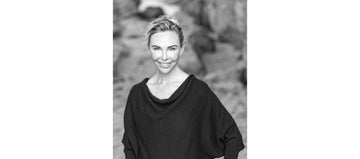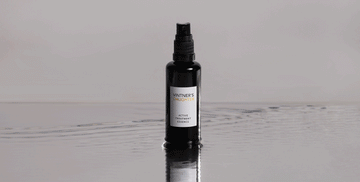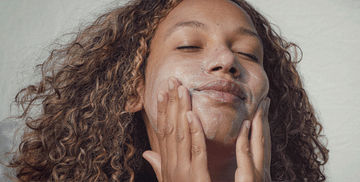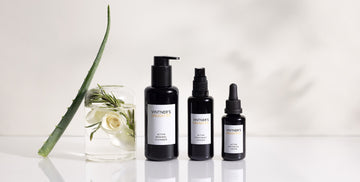In Conversation with Shauna Shapiro
This expert in mindfulness and self-compassion explores the powerful practices that can lead to self-love, peace and joy.
I first met Dr. Shauna Shapiro when we were both students at Duke University. She has since gone on to become a bestselling author, clinical psychologist, and world-renowned expert in mindfulness and self-compassion. What is so profound about Shauna’s work is that she found her mission through a significantly painful period in her life. It was her passion and spirit that allowed her to transform hardship into a life devoted to helping others. Reading her newest book, “Good Morning, I Love You” was fascinating because while I have studied mindfulness through Buddhism for many years, her more secular and scientific approach to the practice was eye-opening. I could not wait to sit down with her to dig a little deeper. In addition to publishing over 150 papers and three critically-acclaimed books, Shauna has worked with companies including Google and LinkedIn and her TEDX Talk, “The Power of Mindfulness,” has been viewed over 1.5 million times.
Also, don't miss the companion journal to "Good Morning, I Love You". This guided journal is filled with science, inspiration and practice, inviting all of us to cultivate pathways of self-compassion, mindfulness, gratitude, calm, resilience and joy. Neuroplasticity has taught us that to change our brains (and our lives)—we can’t just read about it—we have to practice. This journal offers powerful practices that can be done in five minutes a day and radically improve your relationship with yourself, your loved ones and the world.
It was so exciting to reconnect with Shauna, learn more about her incredible work and gain some new insights that we can all benefit from. I hope you find this conversation as illuminating as I did.
xx April
Shauna, thank you so much for doing this. What I loved about your new book is how it addresses meditation and mindfulness with love and kindness. So much of that stems from Buddhism. But you approach it in a non-denominational way that's science-led. Was that a conscious decision?
Absolutely. In fact, I had to read through the book a few times with the lens of “Am I coming from a voice that is universal? Am I leading with the science?” For me, mindfulness is a universal practice. It’s an innate human capacity, like a superpower that all of us have that simply needs some training. My hope is to make it accessible to everyone regardless of your spiritual or religious beliefs or cultural background.
Can you take us on your journey a bit, from studying at school to where you are now?
As I share in the book, I think the pivotal moment in my life was when I had spinal fusion surgery. I went from being a healthy, active teenager—I’d been captain of the volleyball team and I'd gotten in early to Duke to play volleyball— to lying in a hospital bed unable to walk for six months. There was a lot of rehabilitation. The physical pain was difficult and challenging but what really got me was the mental and emotional strain. It was the anxiety and fear that my whole life was ruined. That I would never play volleyball again. That I would never have a boyfriend because no one could ever love this scarred body. That I would always be in pain. This was a huge fear and I didn't have the tools to cope at 17. That’s when my father gave me a book, “Wherever You Go, There You Are” by Jon Kabat-Zinn. He was a pioneer in bringing mindfulness to the Western world. I opened the first page and it said, “No matter what has happened to you, it’s already happened. The real question is, now what?” Tears started running down my face. I realized I could be happy again. There is a path forward.
I started practicing the exercises in the book and reading everything I could about mindfulness. It started to open up these little windows of space, of compassion. I learned in this moment I'm okay. In this moment I can smell the beautiful ocean breeze or the flowers or I can watch the sunset. It created gaps between the pain. Before it felt like the pain was constant and overwhelming. The mindfulness started to bring me into the in-between moments and recognize that there was beauty and joy amidst suffering and pain.
That's extraordinary. Did that lead you to study mindfulness?
After I healed, I went to Thailand and Nepal. My goal was to visit a monastery to study meditation. Up to that point, I'd never really been instructed in how to meditate. I just kind of practiced on my own. When I got to the monastery I remember how excited I was because I thought "These are real monks and real meditation.” They explained to me that mindfulness is about paying attention, training my attention by focusing on my breath. When I first started, my mind wandered off making it challenging to stay focused. I learned later that the mind wanders on average 47 percent of the time. So about half of your life, you're spaced out. You're not present. I didn’t know this then so I would get impatient, frustrated, and beat myself up about it.
After five days in silence with my own crazy mind, a monk arrived from London and asked how it was going. He said something that changed it for me. He asked me how it was going and I answered, ”It's terrible. I'm really awful at this. I'm kind of a fake. I don't know why I'm here." He looked at me with a little twinkle in his eye, laughed, and said, "You're not practicing mindfulness. You're practicing judgment, impatience, frustration." Then he said these five words. "What you practice grows stronger," and that was revolutionary. He explained that if I was meditating with judgment, I was growing judgment. If I was meditating with frustration or impatience, I was carving out mental pathways of frustration and judgment. He probably didn't know about neuroscience, but he was explaining to me the bedrock of neuroplasticity, which is whatever you practice grows stronger. Our repeated experiences shape our brains.
That’s one of the things about Buddhism that has always blown my mind. How this ancient practice that came before modern science understands our brain.
That's what's so amazing. As we continue to learn more from a modern science perspective, we keep uncovering basic truths that they've been saying all along. This was revolutionary to me because up until that point I thought mindfulness was about being present. The kindness piece just transformed the whole practice. I realized If I'm judging myself I'm practicing judgment. I was in Thailand and Nepal for three months but those two weeks at the monastery are to this day, some of the most transformational experiences of healing and joy that I've ever had. It wasn't that my back pain that went away for good. But I felt whole in my body for the first time since my surgery and I felt at peace. When I came back to the U.S., I decided to get my Ph.D. I really wanted to understand what happened to me. In my program, I had an extraordinary mentor who encouraged me to study mindfulness alongside medicine. People in my program said, "You're going to ruin your academic career. Are you crazy? Why are you doing all this mumbo-jumbo stuff of meditation?" And yet, I knew that it was healing. My first study centered on reducing anxiety and increasing empathy for patients with mindfulness. My second focused on how mindfulness could reduce stress in breast cancer patients and help them sleep better, ultimately improving immune function and their overall health. As I continued to work with patients as a clinical psychologist, I was seeing all different types of people, from cancer patients to stressed-out college students, parents and high-level CEOs. I was struck by the fact that everyone talked about the same thing. The sense of "I'm not good enough." This tremendous self-judgment. I knew how they felt. The feeling of shame and self-judgment is universal. So I started studying shame and what happens when you judge yourself. Does it help you become a better parent? Does it help you lose weight or exercise? The answer is no. Shame doesn’t work.
There is a chapter where you talk about how self-esteem and shame are in the same shadow world versus compassion and self-love. Will you talk about that?
Basically, when we come upon stress, we take one of two coping routes. One is to shame ourselves and beat ourselves up, which doesn't work because it shuts down the learning centers of the brain. The other path is we try to build ourselves up or rationalize. Traditionally, we believed self-esteem was good for us. We've spent a lot of money in our education system teaching our children self-esteem. What we see from the research is that self-esteem is actually a false ally, a fair-weather friend. It's with you when you’re doing great but as soon as you're in pain, as soon as you've made a mistake, it abandons you. Self-compassion is the kind of stable, loyal friend that's always here. It's not that there aren't benefits to self-esteem. It's just there are a lot of pitfalls. What I think is more powerful for our children and for us as adults is self-compassion. It still means that we are cheering for ourselves and have pride in our work and in who we are but our worth isn't tied to our external successes.
How is an attitude of kindness and curiosity linked to performance and well-being?
It's very surprising to people that kindness and compassion for themselves could lead to performance and success. A lot of times when I'm trying to teach self-compassion, people sort of roll their eyes, especially when I'm working with high-level executives. They say, "I don't want to lose my edge or I don't want to seem lazy or self-indulgent.” That’s when I show them the science. There was a study of women trying to lose weight. Half the women are taught self-compassion, the other half are in a traditional weight-loss program. The women who are more compassionate with themselves lose more weight. Why? Because shaming and judging ourselves doesn't work, especially long-term. Self-compassion, kindness and curiosity create a physiological environment for learning. When we're kind to ourselves, it bathes our system in dopamine. It turns on the learning centers of the brain and gets our resources back from our fight-or-flight response. We use these resources to learn and to heal and to grow. Curiosity, another great vehicle for learning, releases chemicals that turn on the motivation centers. We become interested and curious. Self-compassion and curiosity create this growth mindset. We're not afraid to fail because failure doesn't mean failing, it means that we've learned one way that doesn’t work.
There’s a quote in your book, "Mindfulness awakens us to life, not just the challenges but also the boundless beauty." I underlined that passage and then went outside to take a walk. I can tell that there was this extraordinary thing that happened to me while I was walking that I would not have appreciated as much had I not just had that moment with the line in your book.
Besides just learning, it's the foundation for living and why your story is so important. People often think mindfulness is just a stress-management technique or a way to handle our pain. What you describe is about waking up to life. It wakes you up to the full spectrum and all of a sudden tastes and sounds and sights become more vivid and there's this joy in simple acts. That is what I experienced at the monastery, that kind of miracle of life. Einstein says that you can live life in two ways: either everything's a miracle or nothing is. What I believe is at the root of awe is paying attention. And if we're really paying attention, life starts to turn on in this different way and there's a joy that can exist even amidst pain and sorrow.
This is also something you wrote about. That it's not about changing your experience, it's about how you change how you relate to it.
I'll say that there are two things I want to teach my kids. One is this aliveness. To not spend their life on automatic pilot. To experience the depths of joy and beauty as well as sorrow and compassion. The second thing that I wish for our children and the children of the world is to hold themselves with kindness. To treat themselves with love and to know themselves as loved in the world. That is something we can teach.
The loving-kindness practice you share in the book was really great.
That one's so fun because you can do that kind of thing anywhere. Often, when I was going to pick up my son from school and he was super stressed, I would start sending him loving-kindness before I got there. “May Jackson be peaceful. May Jackson be happy. May Jackson be healthy.” Then I would send it to myself: “May I be peaceful. May I be happy.” I would kind of soothe myself as I was racing through rush hour from the university to get him. It was a beautiful way that I could connect with him even before I showed up. I've started doing this when I'm working with a patient or a client. I’ll send them loving kindness just before I meet to prepare my mind and heart. It's been a powerful practice for me during COVID because I haven't been able to see my patients. I'm very close to them and we usually visit all the time. Sending them loving kindness is a powerful way to kind of soften the miss and stay connected with them on a deeper level.
I think this is at the heart of why mindfulness is so powerful and so healing. I think this sense of isolation and loneliness is the disease of our time.
When you start practicing mindfulness (which means to see clearly), you begin to see how connected we all are and how connected the breath and the heartbeat are. You start to realize, “I’m more like you than I am unlike. We are not so separate.” 99.9 percent of our DNA is exactly the same. There’s something really healing in that while still honoring and respecting our differences. It's not saying that we're all one and we're all the same. But within that, recognizing at the most fundamental level we are all connected.
Will you walk us through the “Good Morning, I Love You” practice?
Sure. I always do the “Good Morning, I Love You” practice first thing when I wake up. While lying in bed, I place my hand on my heart and take a moment to simply feel the connection; to receive this tender gesture of self-care.
Place your hand on your heart. Focus on your palm. Feel your heart pulsing through your chest.
Feel how your heart is taking care of you, sending oxygen and nutrients to the trillions of cells in your body. The heart knows exactly how to care for you—you don’t have to control it or even think about it. Simply receive this nourishment.
When you’re ready, take a breath, and say, “Good morning, [your name].” Or Good morning, I love you, [you name].
Send these seeds of blessing out into the world, offering the phrase “Good morning, I love you” to anyone who comes to mind.
Recognize that we are never just practicing for ourselves. Everything we do has echoes in the universe.
If we create a habit of greeting ourselves with love each morning, these first moments of our day can transform the rest of the moments of our day, our lives and the lives of others.
Now for some last, quick questions. What's something people would be surprised to learn about you?
I'm the worst cook in the whole world.
What is your dream holiday destination?
A beach destination where everything's included so I don't need to move. Where I don’t need to do anything so that my mind really can rest and there are no decisions.
What are some of your most beloved and cherished things?
I am so not a stuff person. I think I would say my journals. I've been journaling since I was 17 at the time of my surgery and I have done so almost every day since then. I have a bookshelf of these gorgeous golden shiny journals that I love so much.
Do you have a favorite charity or non-profit organization?
I have to say Spirit Rock Meditation Center.
You can follow Shauna on Instagram @drshaunashapiro and learn more about her work, books and events on her website.








